Vegetable farming is the cultivation of vegetable crops, primarily for use as human food. Vegetable gardening involves site selection, garden planning, soil preparation, seed and plant selection, planting, and nurturing plants until they are ready for harvest.
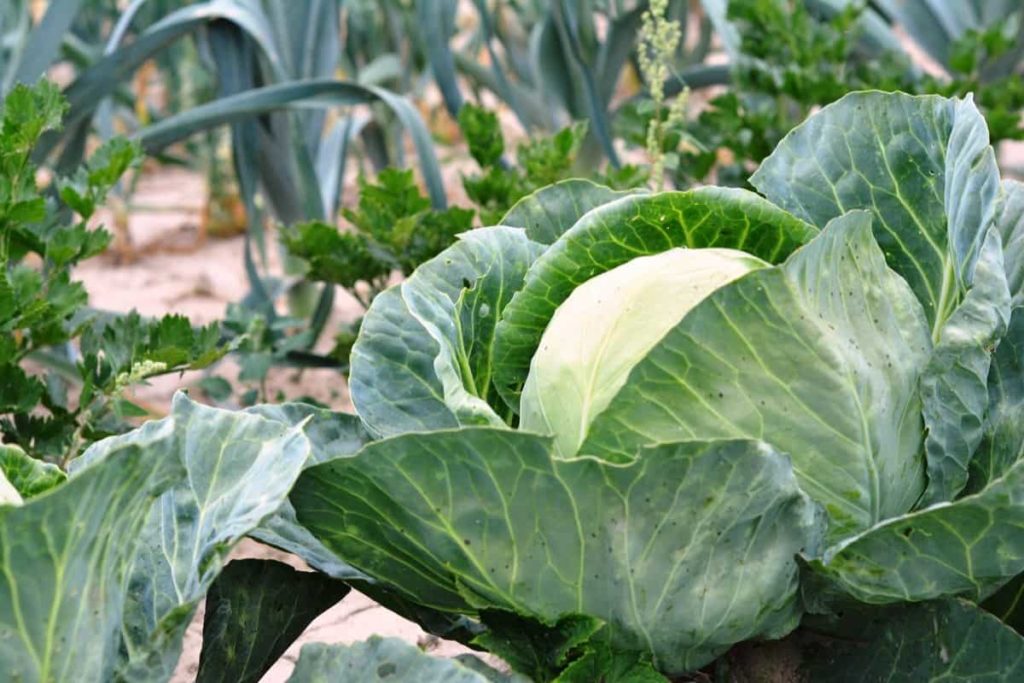
Vegetable Gardening/Farming ideas: Tips, Techniques, and Secrets
How can I make the perfect vegetable garden?
1. Choose the right location – Choose a spot for the garden that gets plenty of sun and lots of space and is close to your hose or water source. Find a surface area to help prevent erosion.
2. Find a location with plenty of sunlight – Ideally, your vegetable garden should receive 6 to 8 hours of direct sunlight daily. This exposure should be reduced in very hot climates, and crops should be partially shaded.
3. Choose your vegetables – Decide which products to include based on your climate, location, tastes, and skill level. Newcomers may want to consider easy crops like Carrots, Beans, Cucumbers, Peppers, and Lettuce.
4. Prepare the soil – Mix compost and natural fertilizers in your garden to improve soil conditions for your plants. Garden supply stores can test the acidity of your soil and recommend supplements, or you can buy specially formulated soil in bulk.
5. Check the planting dates – Growing conditions and ripening cycles vary by plant and season, so you shouldn’t sow all the seeds at once. Before creating a gardening schedule, evaluate the ideal conditions for each vegetable you want to plant.
6. Plant the seeds – Place your seeds in the soil, carefully following the depth and spacing guidelines. Now that you know where to place your vegetable garden to take advantage of variables such as your local climate, sunlight, or watering, it’s time to plant some seeds. Your seed packet should indicate your top months for planting and picking vegetables. It should also give guidelines on how deep you should plant your seed.
7. Water your vegetable garden – Water your vegetables once or twice a week instead of daily. In the meantime, remove unwanted weeds as they arise so they don’t regrow and get stronger. Water the garden gently throughout the growing season to moisten the soil.
8. Fertilizing – Each vegetable crop has unique nutrient needs during the growing season. The natural texture and fertility of the soil also play a role in when and how much additional fertilizer plants need. Lighten the soil by hand and add compost to keep it rich. You can buy ready-made garden compost or make your own with items such as Epsom salt, eggshells, fish tank water, and kitchen compost.
In case you missed it: 14 Key Rules for Successful Backyard Farming/Gardening: A Beginners Profitable Guide
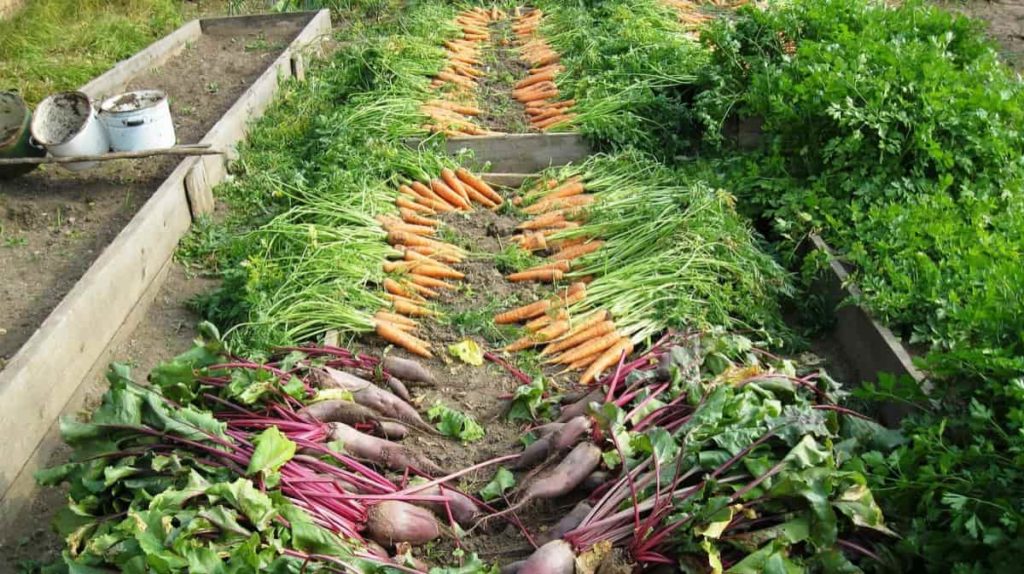
9. Keep weeds out – Mulching is the most effective way to control weeds. If weeds appear in the garden, hold them down by their stems and give them a quick shake, making sure to remove the entire root.
What is the purpose of a vegetable garden?
A vegetable garden helps you eat more fresh fruits and vegetables. You decide what fertilizers and pesticides come into contact with your food. It allows you to control when to harvest your food. Vegetables grown in the garden are more nutritious than store-bought vegetables that must be picked early.
- Save money on groceries – One of the benefits of enjoying garden vegetables is the reduced monthly food bill. You can grow organic vegetables at a fraction of the cost in stores.
- Get outdoor exercise – Gardening is a physical activity, and pulling weeds, planting, and digging can burn up to 400 calories per hour. Gardening is also good mental exercise and helps keep your mind sharp.
Gardening is a natural stress reliever. Increasing your productivity also gives you a great sense of accomplishment.
What makes a good vegetable garden?
- Deep, nutrient-rich soil encourages extensive root systems and strong vegetable plants. Nourish soil with plenty of organic matter like manure, compost, or leaf mold.
- Compost and leaf mold can easily be made free at home, so compost everything and have a thriving composting setup at the center of your garden.
- Companion planting is a great way to improve your garden. Some vegetable plants replenish nutrients lost by others, and some compounds effectively repel insects.
What type of soil do you use in containers for vegetables?
- Many vegetable plants such as Greens, Tomatoes, and Peppers are naturally suited to container gardens. At the same time, newer dwarf varieties make it possible to grow squash and fruit trees in pots.
- Select the right soil to fill your pots with to give container-grown crops the best home. The best soil mix for container vegetables is well-drained, well-aerated, and has a pH close to neutral. Potting mixes with or without clay offer all of these qualities.
- A good mix for your containers is one part of garden soil, peat moss, and perlite or coarse sand. Soil taken from the yard or garden bed is too dense to be used in pots or raised beds. Instead, for containers, use potting mix (also known as potting soil), a lighter and faster alternative. For raised beds, you’ll want to use slightly heavier soil for this type of garden.
What vegetables do well in containers?
- There are different containers available for growing vegetables, including (but not limited to) 5-gallon plastic buckets, plastic pots, plastic storage containers, terra cotta/clay and ceramic pots, concrete and Wooden planter boxes, wooden barrels, bushel baskets, plastic bags, bags, and self-watering containers.
- Wooden planter boxes are one of the best choices for growing vegetables in containers. They’re attractive, come in all sizes, are durable, widely available, and relatively inexpensive.
- You can grow many vegetables in containers, including Tomatoes, Potatoes, Beans, Beets, Swiss Chard, Radishes, Peas, Carrots, Cucumbers, Squash, Zucchini, and other leafy greens. The leafy vegetables that should be grown in pots are Spinach and Kale.
What is an ideal site for vegetable production?
- An ideal topography for vegetable production is nearly flat to slightly sloping, well-drained, and free of trees, rocks, and lowlands. In fields with this type of topography, the efficiency of crop maintenance, irrigation, and harvesting operations is greatly increased.
- Choosing a suitable location for a vegetable garden is important for beginning gardeners.
- Choose a suitable location in full sun with easy access to well-drained soil. Avoid areas near trees that compete with the garden for sunlight, water, and nutrients. Basic considerations when choosing a location for a vegetable garden include sunlight, soil type, and other factors.
How deep do pots need to be for growing vegetables?
- Most vegetables need a container depth between 6 and 12 inches of growing healthy and strong.
- Most vegetable plants aren’t fussy about what kind of container they grow in. There are many suitable containers for growing vegetables, and almost any vegetable can be grown in a container. No matter what container is used, drainage is important and can mean the success or failure of your garden and plants.
- To help with drainage, it is advisable to use a potting foot or brick to lift the pots off the ground. Adding rocks, gravel, or broken pots to the bottom of the container will not improve drainage. It can raise the water table, which can lead to drainage problems.
How do you make a unique vegetable garden?
- A small single variety garden – A small raised garden, about four by four feet, is the perfect size for four tomato plants. It should give the plants plenty of room to grow and allow you to add tomato cages to help the plants climb. Maintaining a single garden works great for beginners because you don’t have to worry about different sun and water needs.
- Expanded raised bed garden – When choosing a location for your vegetable garden, consider the landscape design that the project eventually becomes. You can create more beds and expand the layout of the garden and the types of vegetables in each bed.
- A slender garden – Make the most of every square foot and use more vertical or horizontal space to create a slim garden along your backyard fence, wall, or another narrow area. This type of garden is suitable for climbing plants like Cucumbers, Zucchini and Squash.
What vegetables should I start growing?
- Grow what you like to eat – If space is limited, focus on vegetables that give the most return for the effort, such as Pole Beans, Root Crops, Tomatoes, and Leafy Greens. Try vegetables that are difficult or expensive to find at the market, such as specialty Lettuces or Broccoli.
- Cool season annuals – Plant these crops in early spring and early fall. They are cold, hardy, and thrive in spring and fall: Beets, Broccoli, Brussels Sprouts, Cabbage, Carrots, Cauliflower, Collards, Kale, Onions, Peas, Potatoes, Kohlrabi, Lettuce, Mustard, Radishes, Rutabagas, Spinach, Swiss Chard, And Turnips.
- Warm season annuals – Plant these crops after the last spring frost when the soil has warmed. They thrive in summer: Beans, Cantaloupes, Corn, Cucumbers, Eggplant, Okra, Peppers, Pumpkins, Tomatoes, Southern Peas, Squash, Sweet Potatoes, and Watermelons.
- Biennial crops like Artichokes grow the first year, flower, fruit, and die back the second year.
- Perennial crops like Asparagus and Rhubarb live for many years
In case you missed it: 12 Key Rules for Successful Container/Pot Gardening: For Beginners
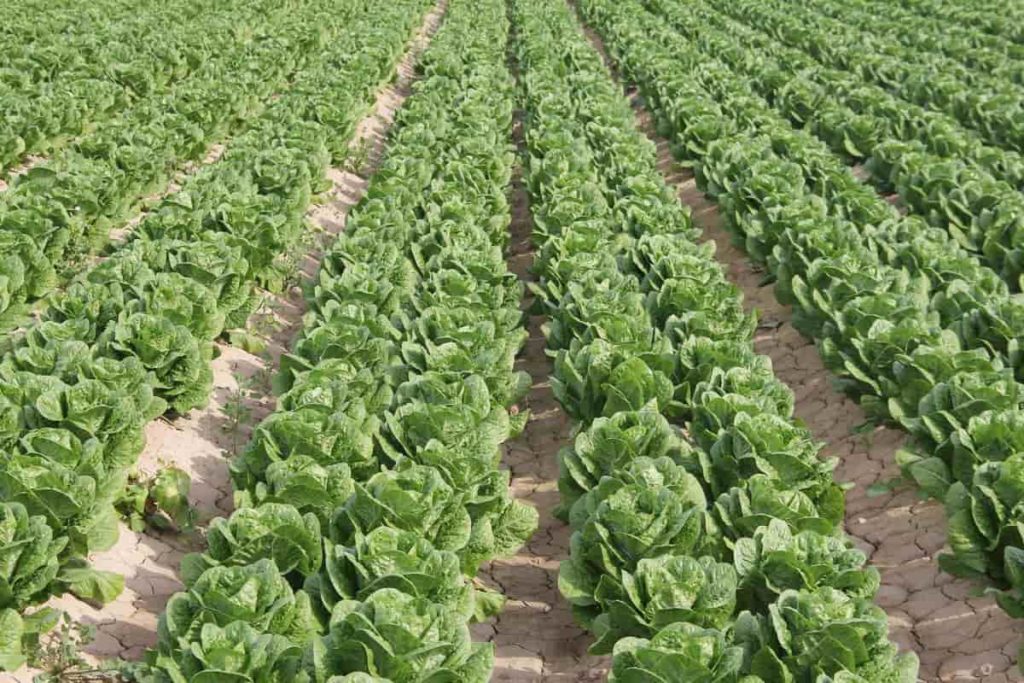
What can I plant in a raised garden bed for beginners?
- Lettuce, Spinach, and mixed salad greens grow well in warm soil temperatures and well-drained soil in raised beds. As a gardener, you’ll love that you can extend your growing season by planting earlier and later in the winter with proper care.
- Raised beds are ideal for sowing vegetable seeds like tomatoes, Beans, Lettuce, Capsicum, Eggplant, and more. Plan and plant vegetable and herb seeds according to their sunlight and water requirements. Also, apply mulch around the plants to keep the soil evenly moist.
- A raised bed should have adequate drainage. Soil should retain water as per its requirement. Too much soil and plant roots can be deprived of oxygen. For drainage, if we compare a raised bed versus an in-ground garden, a raised bed allows the soil to drain better.
- Raised bed gardening for beginners: Add compost to the soil to help plants retain water longer. It is like a sponge fit in the soil of a raised bed. Water will flow through it, but some will be stored to help your plant’s productivity and keep the raised bed soil moist. Another raised bed gardening tip is compost helps new plants (if added) get nutrients, so you don’t have to replace the soil after one crop.
Which vegetables are in high demand?
- Potatoes – 62%
- Tomatoes – 61%
- Onions – 57%
- Carrots – 51%
- Bell peppers – 46%
- Broccoli – 44%
- Cucumbers – 45%
- Salad mix – 44%
What is the best fertilizer for container-growing vegetables?
- Liquid kelp, seaweed, or fish-based fertilizers are excellent for container-grown plants. Follow the label and application directions for mixing rates when using any natural liquid fertilizer.
- Learning how to fertilize container vegetables is key to having a short-term and long-term strategy. Whether you make your potting mix or buy a compost-rich mix from the store, the nutrients in your container garden will likely be used up within six weeks. That’s why adding some slow-release fertilizer to your mix and feeding your container vegetable mid-season is important.
- Compost tea is another liquid fertilizer option made from leachate or liquid residue from a compost pile.
- Fertilizer needs will depend on many factors, including the type of plant(s) you are growing, the size of the container, how often it is watered, and the type of fertilizer used.
What is the best method for planting vegetables?
Start small, and grow what you know you and your family will eat. A 100 square feet is a manageable size if planted in the ground. Pick 3 to 5 of your favorite vegetables and buy 3 to 5 plants. If planting in a raised bed, 4′ x 4′ or 4′ x 8′ is a good starting point.
Tips for growing the perfect vegetable garden;
- Location is key
- Soil
- Water wisely
- Use mulch
- Be patient with pest control
- Do not over-fertilize
In case you missed it: 15 Key Rules for Successful Terrace Farming/Gardening: Check How this Detailed Guide Helps Beginners
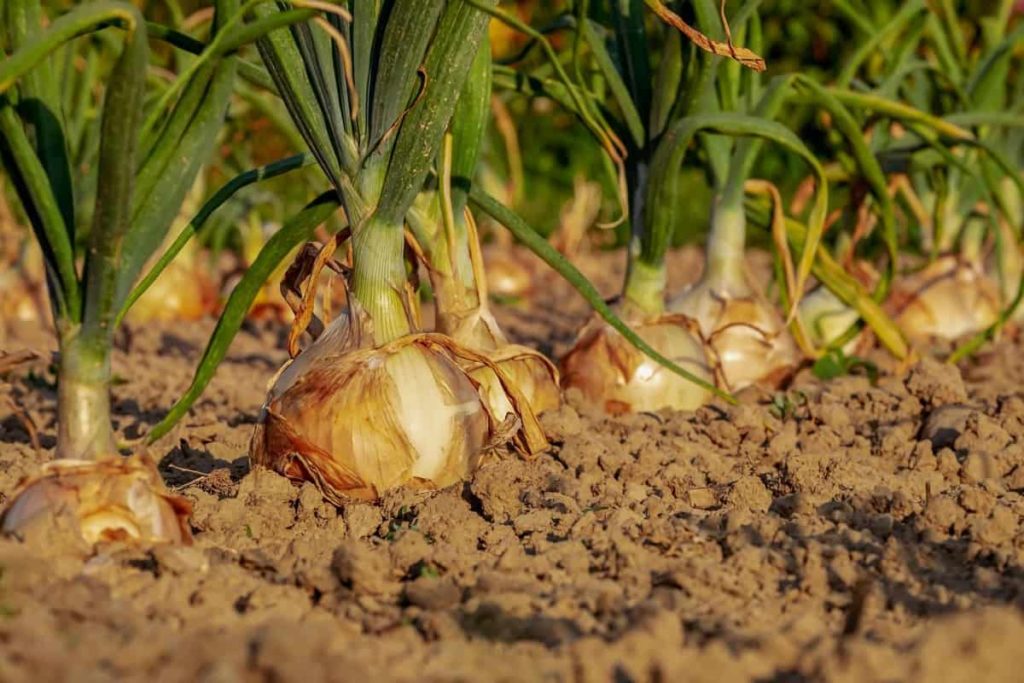
What vegetables can be grown in your backyard?
A small spot in your backyard—about four by four feet or four by eight feet—is a great place for a raised bed and a great way to start growing all your favorite vegetables. If you’re planning to make your beds, avoid pressure-treated woods, which are woods in which water and preservatives are forced into the wood using a high-pressure system. The best vegetables for backyard gardening are;
- Lettuce
- Tomato
- Beans
- Pepper
- Cucumbers
- Swiss chard
How do I start a vegetable garden organically?
In its simplest form, organic gardening means gardening without man-made chemicals. Instead of synthetic ingredients, organic gardeners rely on naturally occurring ingredients that work in harmony with the natural goodness derived from healthy, productive soil. For edible crops, compost is used in the spring and mixed into the garden soil before planting.
- Select your site
- Use great clay
- Good nutrient-rich soil is an important key to a successful organic garden
- Pick the perfect plants
- Feed your plants organically
- Maintain with mulch
- Start with organic garden soil and mulch
- Use organic garden fertilizers
- Organic raised beds
- Practice crop rotation
There are many different liquid fertilizers available on the shelves of your local garden center, or in some cases, you can make your own. Below are the most popular types of natural liquid fertilizers.
- Liquid Kelp or Seaweed
- Fish Emulsion
- Fish Hydroslate (or Liquid Fish)
- Compost Tea
- Earthworm Casting Tea
The above products are useful, but combined with other ingredients are also quite valuable. Natural liquid fertilizer combines these products with blood meal, feather meal, liquid bone meal, and rock phosphate to create a well-rounded fertilizer and growth stimulator.
Is Epsom salt a good fertilizer for tomatoes?
Epsom salt is a foliar spray or soil additive to help tomato and pepper plants grow and produce large, tasty yields. A soil test is a best and most effective tool to determine the soil pH and nutrient level standards before applying any nutrients. You don’t want to add nutrients like Epsom salts without ensuring the plants benefit from them.
If your tomatoes need a boost, dissolve about a tablespoon or two of Epsom salt in a gallon of warm water. Soak the base of the tomato plants and allow the salt solution to soak into the soil. Repeat as needed throughout the season. Using Epsom salt for pepper will provide the same benefits.
What problems can you face when starting a vegetable garden?
- Plant too early
- Proper location of the plant
- Buying too many plants
- Managing weeds before handling them
- Protecting your plants from pests
- Identification and treatment of plant diseases
Managing weeds before they take over – Weeds are the bane of a gardener’s existence. They are difficult to control, and once they get too big, the problem can be much more challenging to deal with. There are three secrets to weed management:
- Start early
- Make small portions
- Be consistent
Protecting your plants from pests – It is very discouraging to put a lot of effort into planting and to tend to your garden, only to come out and find that pests have destroyed your hard work. Again, this is something every gardener faces. Although pest competition is sometimes unavoidable, attracting some of their natural predators to your yard, such as birds, can help reduce the problem.
In case you missed it: Indian Gardening in the USA: For Home, Containers, Backyard, Vegetables, Flowers, Herbs, and Fruits
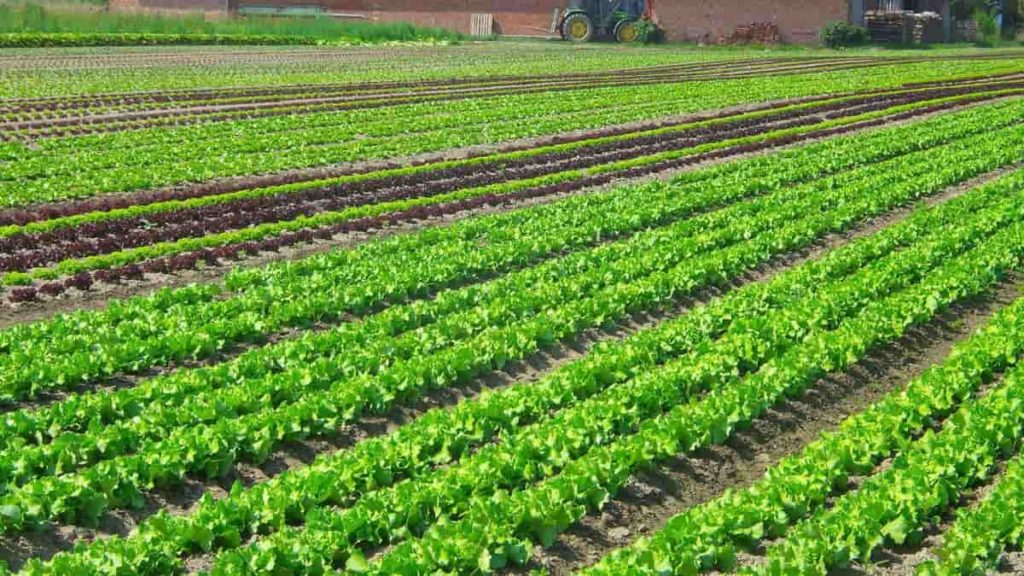
What factors should be considered in planting a vegetable garden?
Basic considerations when choosing a location for a vegetable garden include sunlight, soil type, and other factors. Vegetables grow best in well-drained, fertile soils. Vegetables grow well in heavy soil or poorly drained soil. Important factors in the production of vegetables are how to grow them.
- Area and location of the planting site
- The environment
- Soil quality
- Water system
- Fertilization
- Harvesting
What are the problems in growing organic vegetables?
A final challenge of organic farming is that production yields are lower than conventionally grown food. In addition to lower yields, mainly due to the lack of industrial fertilizers, herbicides, and pesticides, organic agriculture also requires more land to meet previous production levels.
Plants are weak and stunted
- Not enough light; too much shade. Locate a garden with at least 6 to 8 hours of sunlight daily. Remove the source of shade or move the plants.
- Cold weather; the temperature is very low. Protect plants with hot hats, clutches, or floating row covers. Soil pH is incorrect. Test the soil pH. If alkaline, add sulfur, aluminum sulfate, aged compost, or peat moss to the soil.
- Too much water. Do not add too much water. Grow crops in raised beds.
Leaves turn yellow but not wilted
- Nutrient or mineral deficiency. Test the soil for mineral deficiencies. Add complete compost. Add old compost to the beds at least twice a year.
- Insufficient lighting; too much shade. Move the garden to a sunny location.
What are the methods of planting vegetables?
Direct seeding has three planting methods: broadcast, hill, and drill. The actual planting is done manually or with a mechanical planter. Another method, called dibbling, is a form of hill planting. Vegetable production operations range from small plots of crops, producing a few vegetables for family consumption or marketing, to large, highly organized, and mechanized farms common in technologically advanced countries.
The three main types of vegetable farming in technologically advanced countries are producing vegetables for fresh market, canning, freezing, dehydration and pickling, and obtaining seeds for planting.
How do you increase vegetable yield?
- Nourish your soil
- Feed your plants
- Grow in dedicated beds
- Choose plants that thrive
- Grow more in the shade
- Collect more rainwater
- Extend the growing season
- Space plants correctly
Why is my vegetable garden growing but not producing?
- If your plants are big and healthy but not producing any fruit, it could be due to nutrient levels.
- When plants have too much fertilizer or nutrient imbalances, they may put all their energy into growing new leaves and produce fewer flowers and fruits.
What vegetable plants work best in a vertical garden?
Favorite vegetables for vertical growing are Pole Beans, Climbing Peas, Sweet Potatoes, Grape Tomatoes, and a wide variety of Zucchini, Cucumbers, Melons, and Squash that can be trained.
How do you start a vegetable garden vertically?
- The best soil for any vertical garden is good quality commercial potting soil based on loam mixed with other elements. If you want to prepare a similar soil at home, this recipe includes equal parts peat moss or very mature compost, garden loam or topsoil, and builder’s clean sand.
- It is an easy way to grow, prevent pest and disease problems, and beautify decks and patios. You can purchase a vertical gardening setup with grow lights to grow a vertical garden within a vertical garden or purchase a pouch to grow vertically.
- Vertical gardening methods are a great gardening style that can work practically anywhere. It won’t work if the crop is too heavy or requires too much depth in the soil. However, vertical gardening works well for fresh herbs and Lettuce regardless of the setup.
Is growing hydroponic vegetables profitable?
Hydroponic farming is very profitable, and an acre of farmland will bring in between $200,000 and $250,000 per year, while conventional farming will net you between $20,000 and $30,000. It is a fun way to grow your herbs and vegetables. Hydroponic systems use nutrient-rich water instead of soil and have been around for thousands of years. Tips to start hydroponic gardening are;
- Choosing plants and starting your seeds
- Select a light source
- Choose a hydroponic grow medium
- Buy hydroponic nutrients & supplements
- Buy a pH meter and pH up/down
Best vegetables growing in a hydroponic garden
- Lettuce
- Tomatoes
- Chili
- Cucumbers
- Green beans
- Basil
In case you missed it: How to Start Organic Kitchen Gardening: Tips, Ideas, and A Step-By-Step Guide for Beginners
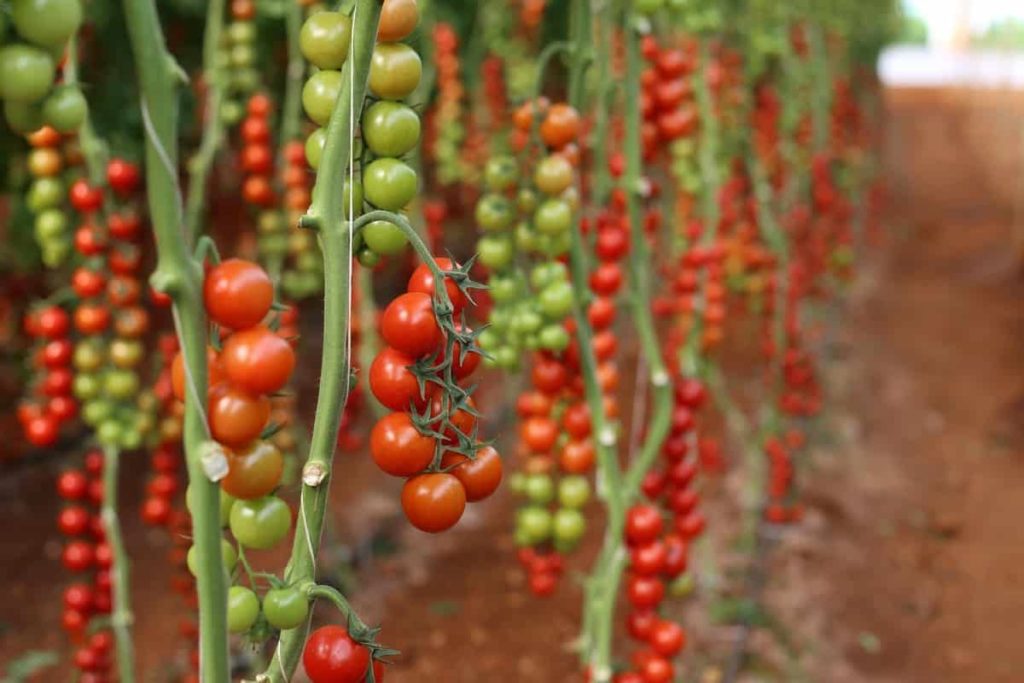
How do you arrange vegetables in a raised bed?
- Arrange the plants with the tallest, such as Corn or Okra, so that the sprouts grow along the center line of the bed. Plant medium-sized plants, such as Peppers, on either side. Finally, look for smaller plants like Radishes and Carrots along the edges of the bed.
- Vegetables in raised beds will need more frequent watering than in an in-ground garden. When planned and planted correctly, a 4- to 8-foot-high bed can provide a good portion of produce for one or two people. Adding trellises provides vertical gardening and increases the space for vines such as Cucumbers and Beans. Use intensive gardening techniques to optimize space utilization.
- Succession planting will also help get the most out of a raised bed in a small area. In addition, high-nitrogen fertilizers promote greater plant growth, which is why many varieties are enriched with nitrogen or include it as a major component.
How often do you water the vegetable garden?
- Vegetable plants do best when watered about three times a week, depending on rainfall.
- Water your vegetable garden so that your plants always have enough moisture. Early morning (5:00 a.m. to 9:00 a.m.) is the best time to water the garden using a sprinkler, garden hose, or other devices that wet plant foliage.
- When watering is complete, the leaves of the plant dry quickly. Rapid drying of plant foliage helps prevent the development of fungal diseases.
What is the organic fertilizer for vegetables?
- Compost
- Manure
- Bone meal
- Blood meal
- Worm Castings
- Fish emulsion
- Seaweed fertilizer
- Tree Leaves
- Coffee Grounds
- Eggshells
- Banana Peels
What vegetables should not be planted together?
Other commonly recognized plant incompatibilities include the following plants to avoid near each other:
- Mint and Onions where Asparagus is growing
- Pole Beans and Mustard near Beets
- Fennel and Dill neighboring Carrots
- Cucumbers, Pumpkins, Radishes, Sunflowers, Squash, Or Tomatoes near potato hills
How do I keep my vegetable plants healthy?
Add a 2 to 4 around your vegetable plants to suppress weeds, retain soil moisture, reduce watering, moderate soil temperature, improve soil health and keep vegetables clean. Add an inch layer of organic mulch. Pine needles, shredded leaves, straw, and grass clippings from untreated lawns work well.
Here are some tips for getting started;
- Start small, whether it’s a container or a raised bed
- Give your garden time to grow
- Plant vegetables only what you want to eat or plants that are easy to care for
- Start a compost pile and ensure your compost bin or pile is easily accessible for your garden and kitchen.
Conclusion
Growing your vegetables is fun and rewarding. All you need to get started is decent soil and a few plants. But to be a truly successful vegetable gardener — and to do it organically — you need to understand what it takes to keep your plants healthy and strong. Above are some essential steps to help you create a successful vegetable garden.
- Types of Pesticides Used in Agriculture: A Beginner’s Guide
- Economical Aquaculture: A Guide to Low-Budget Fish Farming
- 15 Common Planting Errors That Can Doom Your Fruit Trees
- How to Make Houseplants Bushy: Effective Tips and Ideas
- Innovative Strategies for Boosting Coconut Pollination and Yield
- Pollination Strategies for Maximum Pumpkin Yield
- The Complete Guide to Chicken Fattening: Strategies for Maximum Growth
- Natural Solutions for Tulip Problems: 100% Effective Remedies for Leaf and Bulb-Related Issues
- Revolutionizing Citrus Preservation: Towards a Healthier, Greener Future
- Natural Solutions for Peony Leaf and Flower Problems: 100% Effective Remedies
- Maximizing Profits with Avocado Contract Farming in India: A Comprehensive Guide
- Natural Solutions for Hydrangea Problems: 100% Effective Remedies for Leaf and Flowers
- The Ultimate Guide to Choosing the Perfect Foliage Friend: Bringing Life Indoors
- From Sunlight to Sustainability: 15 Ways to Use Solar Technology in Agriculture
- The Ultimate Guide to Dong Tao Chicken: Exploring from History to Raising
- The Eco-Friendly Makeover: How to Convert Your Unused Swimming Pool into a Fish Pond
- Mastering the Art of Delaware Chicken Farming: Essentials for Healthy Backyard Flocks
- 20 Best Homemade Fertilizers for Money Plant: DIY Recipes and Application Methods
- How to Craft a Comprehensive Free-Range Chicken Farming Business Plan
- Brighten Your Flock: Raising Easter Egger Chickens for Beauty and Bounty
- How to Optimize Your Poultry Egg Farm Business Plan with These Strategies
- Subsidy for Spirulina Cultivation: How Indian Government Schemes Encouraging Spirulina Farmers
- Ultimate Guide to Raising Dominique Chickens: Breeding, Feeding, Egg-Production, and Care
- Mastering the Art of Raising Jersey Giant Chickens: Care, Feeding, and More
- Ultimate Guide to Raising Legbar Chickens: Breeding, Farming Practices, Diet, Egg-Production
- How to Raise Welsummer Chickens: A Comprehensive Guide for Beginners
- How to Protect Indoor Plants in Winter: A Comprehensive Guide
- Ultimate Guide to Grow Bag Gardening: Tips, Tricks, and Planting Ideas for Urban Gardeners
- Guide to Lotus Cultivation: How to Propagate, Plant, Grow, Care, Cost, and Profit
- Agriculture Drone Subsidy Scheme: Government Kisan Subsidy, License, and How to Apply Online
- Ultimate Guide to Raising Araucana Chickens: Breed Profile, Farming Economics, Diet, and Care
- Bringing Hydroponics to Classroom: Importance, Benefits of Learning for School Students
- Ultimate Guide to Raising Polish Chickens: Breed Profile, Farming Economics, Diet, and Care
- Ultimate Guide to Raising Australorp Chickens: Profile, Farming Economics, Egg Production, Diet, and Care
- Silkie Chicken Farming: Raising Practices, Varieties, Egg Production, Diet, and Care
- Sussex Chicken Farming: Raising Practices, Varieties, Egg Production, Diet and Care